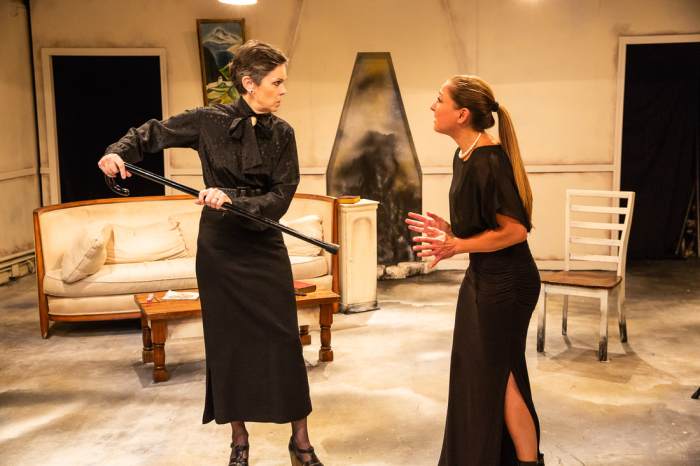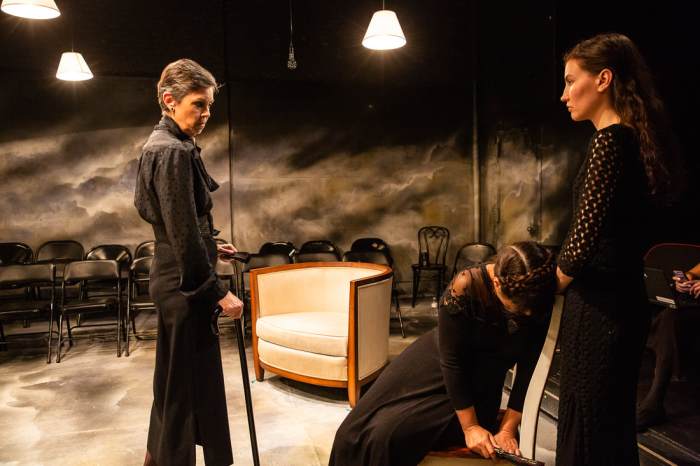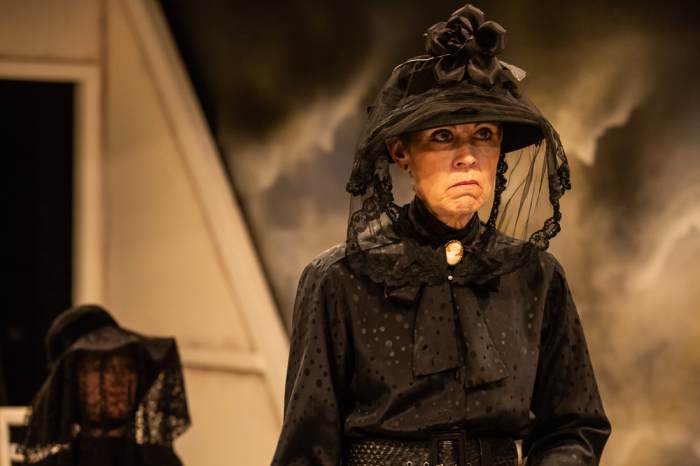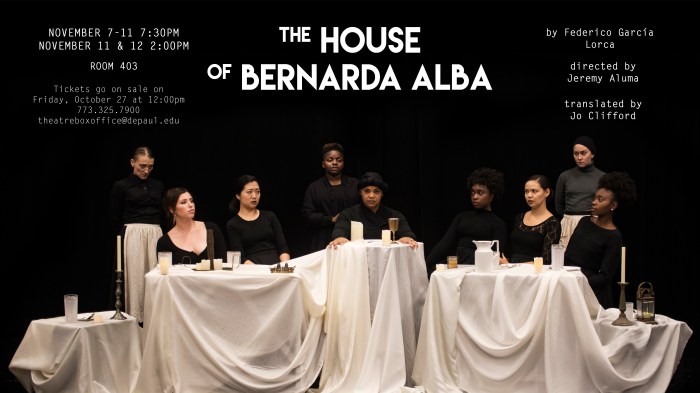La Casa de Bernarda Alba in English presents a captivating and insightful analysis of gender roles and oppression within a rural Spanish village. Set against the backdrop of a society rigidly adhering to traditional norms, the play delves into the lives of Bernarda Alba and her five daughters, exploring their struggles for freedom, desire, and self-expression.
Through its rich symbolism and complex characters, La Casa de Bernarda Alba in English unravels the intricate web of societal expectations and the consequences of defying them. The play’s exploration of themes such as repression, sexuality, and the search for identity resonates powerfully with audiences, making it a timeless and thought-provoking work of literature.
Historical Context: La Casa De Bernarda Alba In English

Set in rural Spain in the early 20th century, La Casa de Bernarda Albareflects the social and cultural norms of the time. During this period, Spain was a patriarchal society where women had limited rights and were expected to conform to strict codes of conduct.
The play’s setting in a rural village intensifies the oppressive atmosphere, as the characters are isolated from the outside world and subject to the rigid traditions of their community. The village’s conservative values, enforced by the authoritarian Bernarda Alba, stifle the desires and aspirations of the younger women, leading to tragic consequences.
Role of Women
- Women were expected to be subservient to men and obey their authority.
- They had limited access to education and employment opportunities.
- Their primary role was seen as being wives and mothers.
- Any deviation from these norms was met with social disapproval and punishment.
Social Norms
- Strict social hierarchies existed, with men at the top and women at the bottom.
- Honor and reputation were highly valued, and any perceived transgression could bring shame upon the family.
- Women were expected to maintain their virginity until marriage and to be faithful to their husbands.
- Marriages were often arranged by families, with little regard for the wishes of the individuals involved.
Character Analysis

Federico Garcia Lorca’s “The House of Bernarda Alba” is a powerful exploration of female oppression and desire. The play’s characters are complex and compelling, each driven by their own motivations and desires.
At the center of the play is Bernarda Alba, a tyrannical matriarch who rules her household with an iron fist. Bernarda’s authority is absolute, and her daughters live in constant fear of her disapproval. However, beneath her harsh exterior, Bernarda is a woman who is deeply lonely and unhappy.
Bernarda’s Daughters
Bernarda’s five daughters are all unique individuals, each with her own dreams and aspirations. Angustias, the eldest, is a dutiful daughter who longs for love and marriage. Magdalena, the second eldest, is a passionate and rebellious spirit who chafes against her mother’s authority.
Amelia, the third eldest, is a gentle and timid soul who is often overlooked. Martirio, the fourth eldest, is a spiteful and envious woman who takes pleasure in tormenting her sisters. Adela, the youngest, is a beautiful and free-spirited woman who longs for a life beyond the walls of her mother’s house.
The Other Women
In addition to Bernarda and her daughters, the play also features a number of other female characters. These characters include Poncia, the elderly servant who is Bernarda’s confidante; Maria Josefa, Bernarda’s elderly mother who is mentally ill; and Prudencia, a neighbor who provides a glimpse of the outside world.
Each of these characters plays an important role in the play, and their interactions with Bernarda and her daughters help to illuminate the complex dynamics of the household.
Symbolism and Motifs

La casa de Bernarda Albaemploys powerful symbolism and motifs to convey its themes and explore the characters’ inner lives.
The House, La casa de bernarda alba in english
The house is a central symbol of oppression and confinement. Its white walls represent the rigid social norms that imprison the women. The house’s isolation from the outside world symbolizes the women’s lack of freedom and agency.
The White Walls
The white walls of the house symbolize the purity and chastity that Bernarda demands of her daughters. However, they also evoke a sense of coldness and sterility, suggesting the emotional repression that the women endure.
The Moon
The moon is a recurring motif that represents both hope and despair. Its waxing and waning symbolize the cyclical nature of the women’s lives, as well as their longing for freedom and the outside world.
Gender Roles and Oppression
La casa de Bernarda Albavividly portrays the oppressive gender roles imposed on women in the Spanish society of the time. Women are expected to be subservient, chaste, and obedient to the men in their lives. Those who deviate from these norms face severe consequences.
Bernarda Alba, the play’s titular character, is a tyrannical matriarch who enforces these oppressive roles with an iron fist. She demands absolute obedience from her five daughters, whom she keeps isolated from the outside world.
Challenging Gender Roles
Despite the oppressive environment, some of the characters challenge these gender roles. Adela, the youngest daughter, falls in love with Pepe el Romano, a man from a lower social class. Her love for Pepe represents a rejection of the arranged marriage that Bernarda has planned for her.
Magdalena, another daughter, is a strong-willed woman who refuses to accept her fate as an old maid. She openly defies Bernarda’s authority and seeks to escape the suffocating atmosphere of the house.
Consequences of Non-Conformity
The characters who challenge gender roles face severe consequences. Adela’s love affair with Pepe ends in tragedy when Bernarda kills him. Magdalena is forced to marry a wealthy but cruel man. The other daughters are left to live out their lives in misery and isolation.
Through its portrayal of gender roles and oppression, La casa de Bernarda Albaexposes the devastating effects of a society that restricts women’s freedom and individuality.
Themes and Central Ideas

La casa de Bernarda Albaexplores a range of complex and interconnected themes, including freedom, desire, and repression.
Freedom
The play’s central characters are all women who are trapped in a repressive society that restricts their freedom. Bernarda Alba, the matriarch of the household, enforces strict rules on her daughters, forbidding them from leaving the house or interacting with men.
This stifles their desires and prevents them from living full and meaningful lives.
Desire
Despite the restrictions imposed upon them, the play’s characters continue to desire freedom and love. Adela, the youngest daughter, falls in love with Pepe el Romano, a young man from the village. Her desire for him leads her to rebel against her mother’s authority, ultimately resulting in her tragic death.
Repression
The play’s repressive atmosphere is symbolized by the house itself, which is described as a “prison” and a “tomb.” Bernarda Alba’s strict rules and the oppressive social norms of the time create a suffocating environment that stifles the characters’ desires and emotions.
FAQ Resource
What is the significance of the setting in La Casa de Bernarda Alba?
The rural village setting reinforces the isolation and oppression faced by the female characters, highlighting the suffocating influence of societal norms.
How does Bernarda Alba represent the patriarchal society?
Bernarda Alba embodies the strict and repressive authority of the patriarchal system, enforcing her will upon her daughters and suppressing their individuality.
What are the main themes explored in La Casa de Bernarda Alba?
The play explores themes of freedom, desire, repression, sexuality, and the search for identity, particularly within the context of gender roles and societal expectations.
